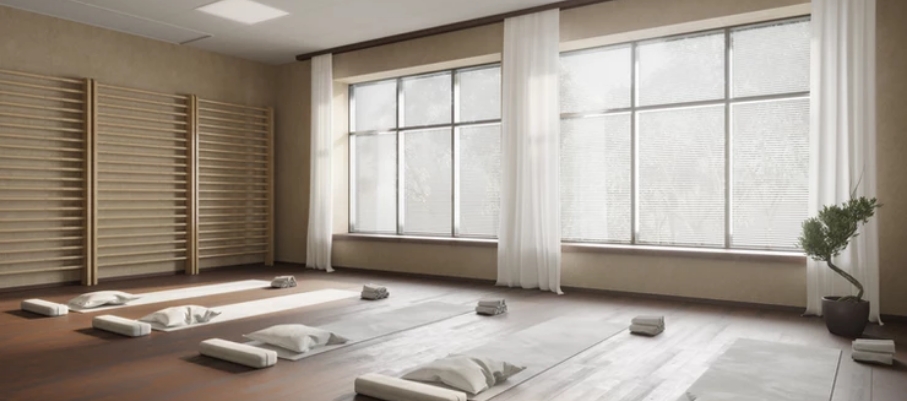Hatha has been used as an umbrella term that refers to the physical practices of yoga also known as postures or asana...
Hatha has been used as an umbrella term that refers to the physical practices of yoga also known as postures or asana. There are many different practice styles of yoga that come with their own principles of practice…Vinyasa, Yin, Iyengar, Ashtanga—Just to name a few.
If Hatha Yoga is on a class schedule in addition to other styles like the ones above, it is most likely being used to describe a certain style of its own.
A deeper dive into “What Hatha Yoga is?” can help students decide if these classes are right for them.
Hatha Yoga: Let’s Go Deep
Hatha Yoga classes are usually gentler, slower paced classes that offer more guidance to the proper alignment of postures. The postures are held for longer periods of time and there can also be a component of breath work (pranayama). These principles of Hatha Yoga can make it accessible to the beginner and provide space to develop skill for the more advanced student.
The Benefits Below the Surface
Build Confidence in Your Practice: New students can learn pose names and foundational alignment while building strength, flexibility, balance, and coordination.
For seasoned practitioners, the slower pace and longer held nature of postures in a Hatha class will allow more time to develop deeper awareness in poses. This depth can lead to more autonomy or independence in the practice.
Lessen Anxiety: Hatha Yoga practices provide time for mindfulness and breath work. Focus and concentration along with attention to the breath and specific breath practices have been proven effective tools for people learning to cope with anxiety.
Strengthen Fitness Endurance: With its focus on strength, flexibility, and breath Hatha Yoga offers a holistic approach to improving overall fitness. The postures encourage balance in the musculoskeletal system which improves exercise performance. Students can gradually build strength and flexibility that is sustainable without the feelings of depletion.
Improve Balance: Hatha Yoga is great for improving balance. Split leg postures like lunges and Warrior poses along with one legged poses like tree pose promote strength in important stabilizer muscles that help to maintain balance. Holding these postures for longer periods of time further enhances their benefits.

What can you expect if you are taking a Hatha Class?
Although not all teachers present their classes in the same format, you can expect a definitive beginning, middle, and end.
The beginning of class is a time to center and warm up the body. The teacher may connect you to a specific theme or to a certain area of the body to help you get and stay focused for the rest of the class.
The middle of class will build warmth and stimulate circulation. This may contain some short movement sequences that are linked with breath or some static holds. Standing poses are usually in this portion of the class and you may even be working toward a peak pose or pose group.
The end of class consists of a cool down and the final resting pose savasana (corpse pose).The cool down and final resting time can help restore balance and start the recovery process. This is a time to begin integrating the benefits of the practice which can continue long after the practice is over.

Take Aways
Hatha Yoga can be both an umbrella term that refers to many different movement styles of yoga or it can be an indicator of a more mindful, slower paced movement practice. Hatha classes can introduce new students to the fundamentals of practice and help seasoned practitioners develop deeper awareness and skill.
There are mental and physical health benefits that can be gained by a consistent practice of Hatha Yoga which will greatly improve overall health and wellness.
Hatha Yoga can be a great way to incorporate exercise into your life that is accessible, approachable, and beneficial.
